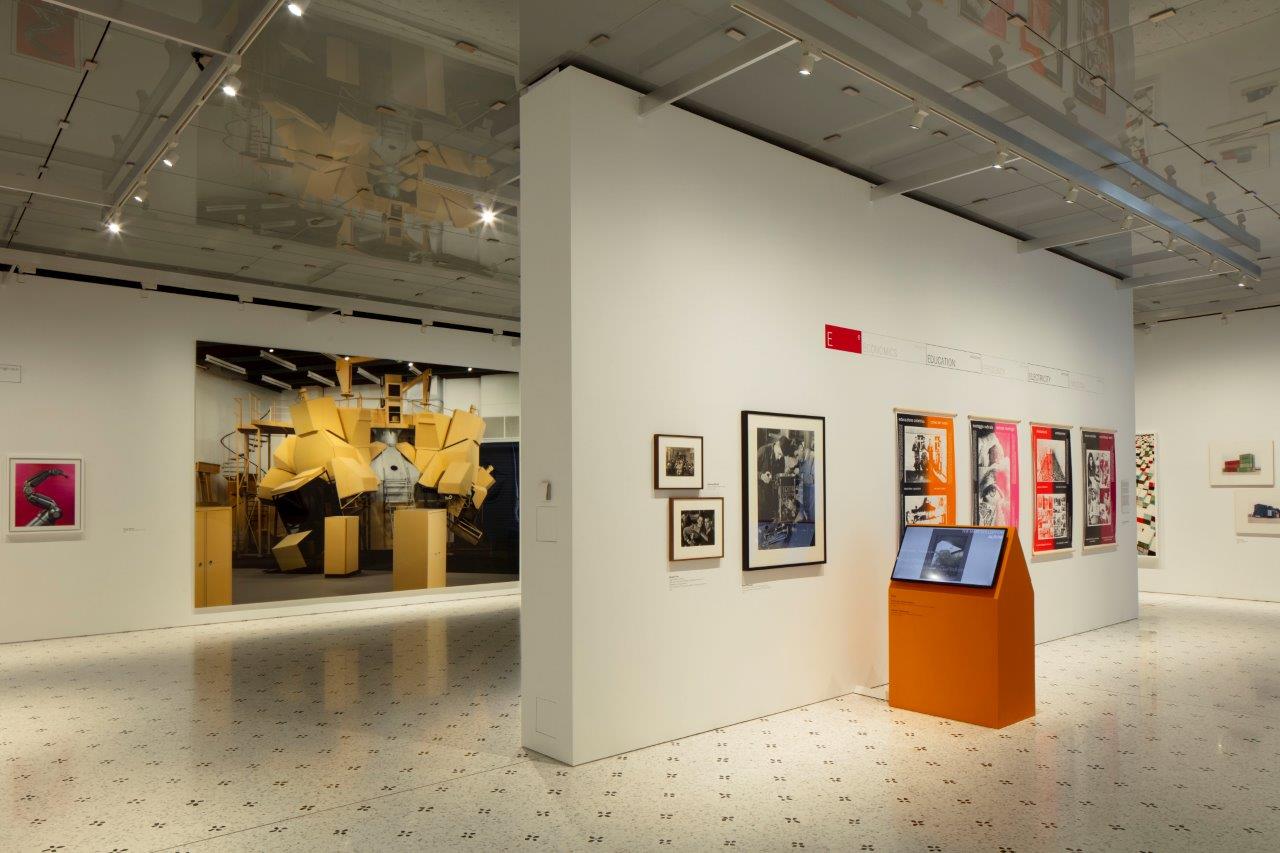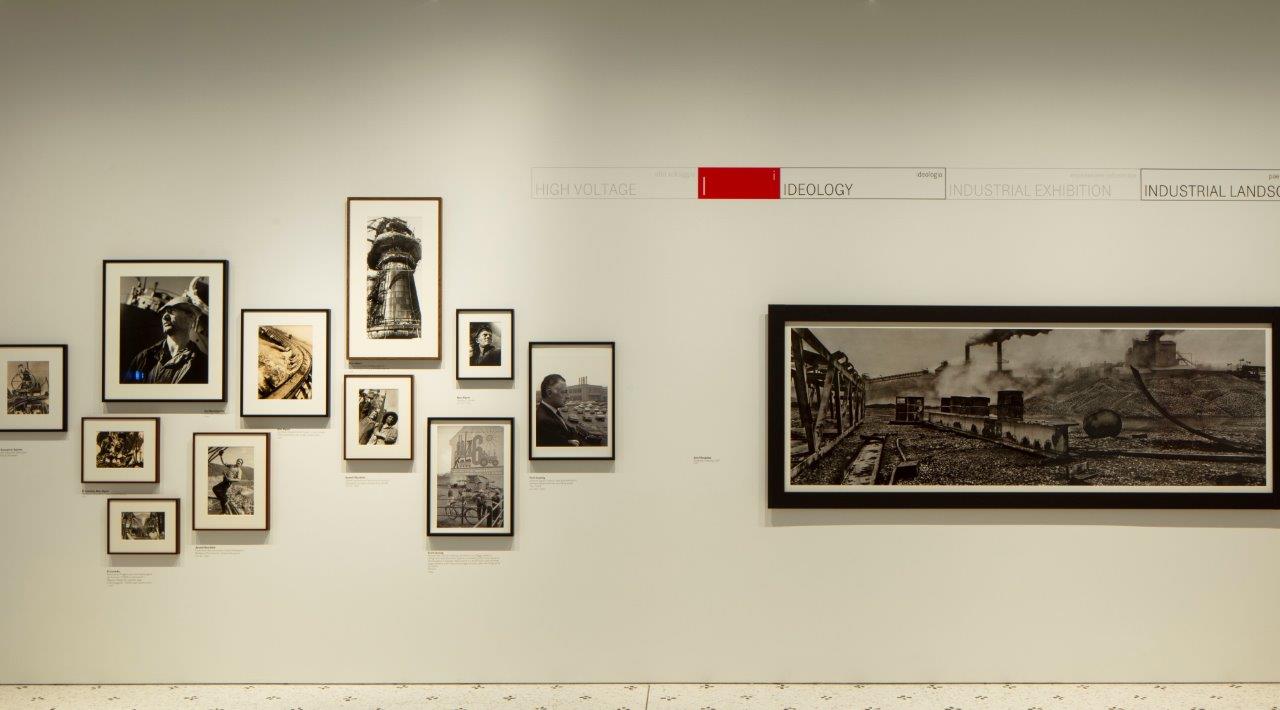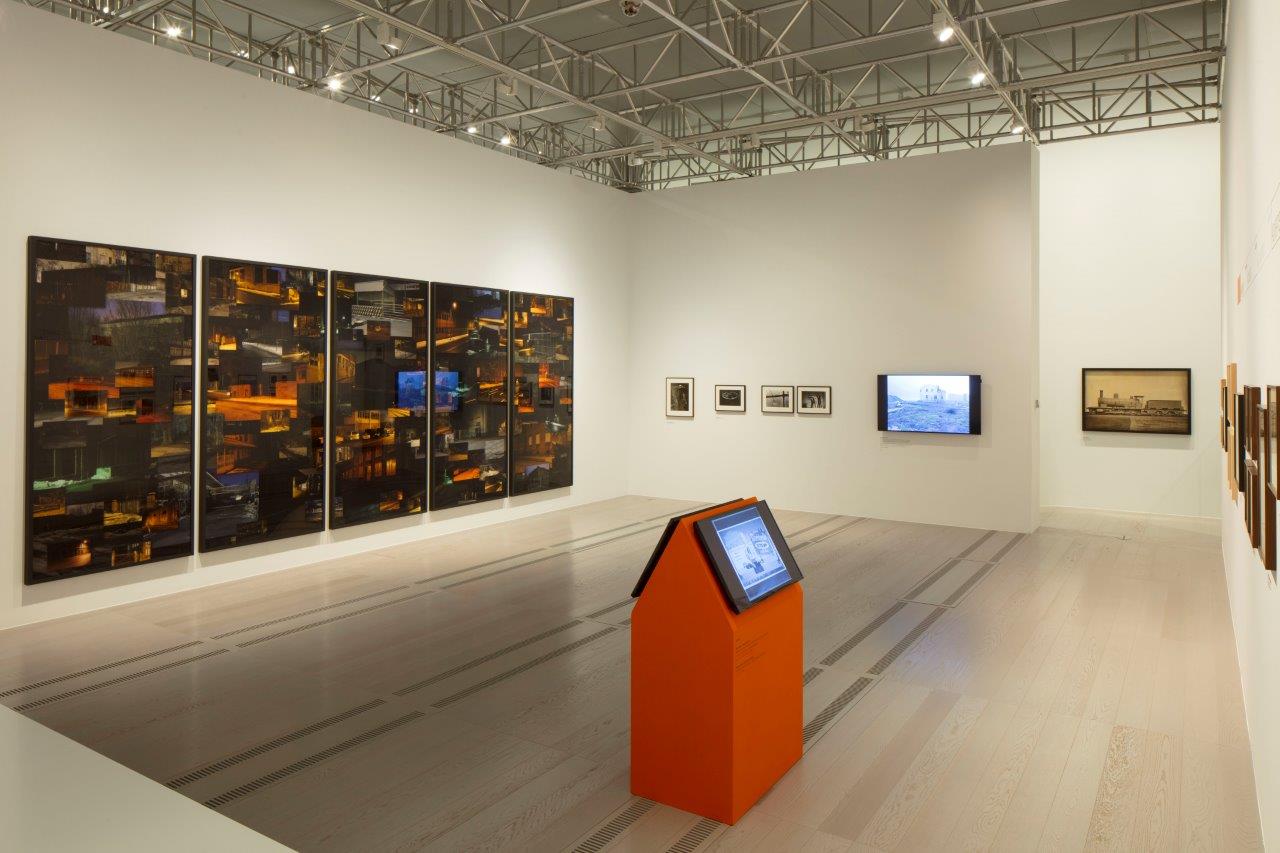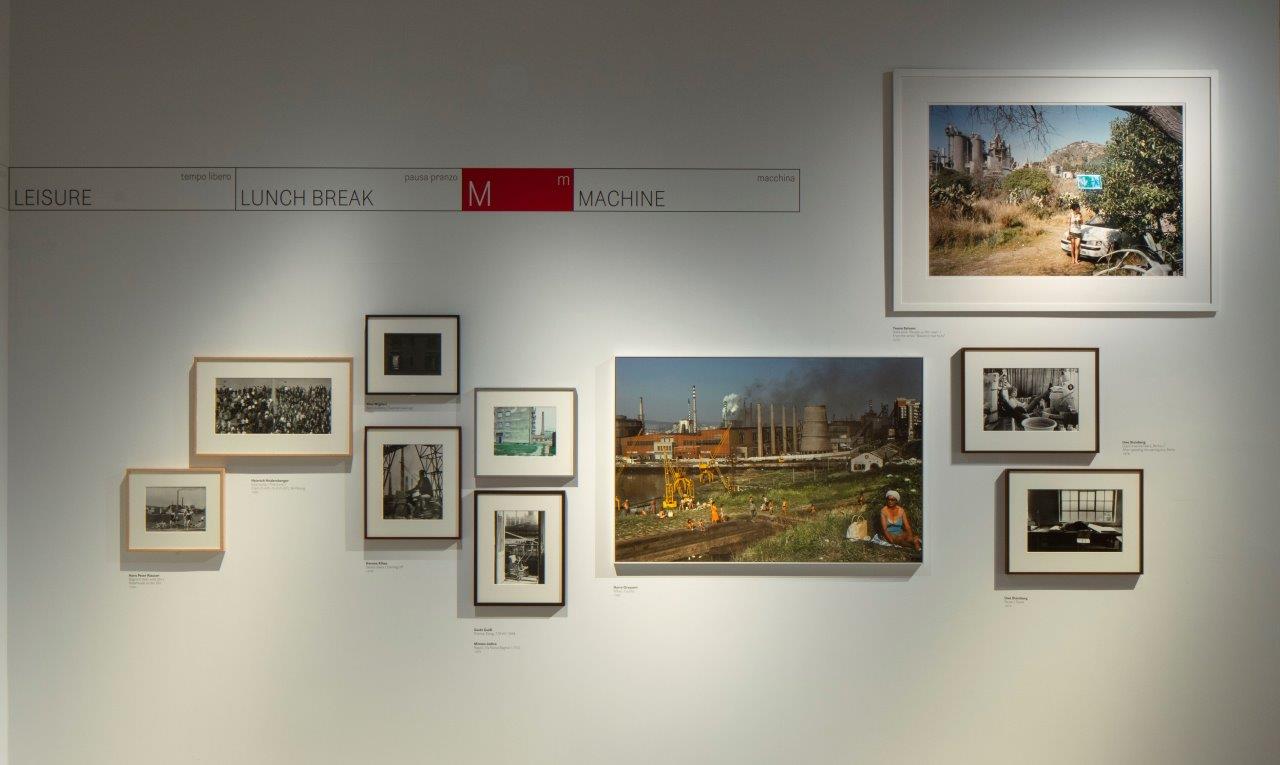It is now almost ten years since Fondazione MAST began collecting strategically. Slowly but surely, a comprehensive collection of photographs (and videos) is taking shape that focuses on the subjects of “industry and work”, or, in more contemporary terms, “industry, technology, and work”. To date, it comprises approximately 6000 photographs by well-known photographers and artists, including works by very famous photographers and artists. In addition, its holdings include an extensive series of albums with a further 3000 to 4000 photographs, many of which were taken by unknown photographers, for example by an engineer who was commissioned with the construction of a large reservoir dam for a power station. He photographed each stage of the project’s growth until, at the conclusion of the construction, he bound his photographs together between leather covers. Sometimes these albums are marked with the name of the originator, but more frequently they are not.
Over the course of these ten years, we have discovered that there are only very few collections in the world that specialize in the field of industrial photography, that is: the photography of industry, industrial processes, machines, devices, and their associated forms of work. In concentrating exclusively on the subject, as Fondazione MAST does, we have so far encountered no other similar collection. This is best illustrated by one particular characteristic, especially when one's own relationships and contacts are no longer sufficient. Let us take the example of the steelworks in Middletown, Ohio, which Edward Weston photographed in 1922. This photograph, or, rather, one of the photographs that he took on the industrial site will be sold on the market for a very high price, while other photographs of the same motif but by other, less well known, less famous, or even completely unknown photographers will fetch much lower prices. That is normal and usual, you will quite rightly think, that is how the market functions and that’s a good thing! And that is actually true – but only under one condition: It is only true as long as the focus of interest lies principally on the photographer, the famous Edward Weston, his extraordinary figure, his value on the market, and on the history of photography, and much less on the photographed subject, the location, the steelworks. Were the interest to lie principally on the steelworks, the locality, its function, its figuration, its influence on the environment, then presumably many would be delighted with the exciting, new perspective of an unknown photographer and their collection of pictures in an album, for example, that presents many aspects of this steelworks but had hitherto been unknown.
Through the prices that are paid, the market therefore tells us where precisely the interests of collectors lie. But the market does not work alone. Small talk, watercooler conversations at work, invitations to dinner or to an evening event are also the places in which we reveal our interests. We often betray ourselves, even if we have not planned to do so. The conversations then go on to pirouette across new, magical, smooth, rough, or glittering surfaces: the finish on a new car, the ceramic tiles in the bathroom, the effect of a new make-up product, the soft sheen of a new silk dress, the exterior shell of a new architectural erection. The pleasure in the appearance, in the moment of novelty, the delight in the perfect encasement is great, at any rate much greater, much more exciting than the production of these objects, the research and development, or the impacts that our interest, our consumer behaviour can have. It is the surface that counts, not the background, the appearance, not the structure, the production, not conditions of production. And so it is with a print of an Edward Weston, Charles Sheeler, Thomas Struth, Margarete Bourke-White, or Germaine Krull, to name just five famous photographers. And less attention is paid to the visual description, analysis, the research into the conditions of life and production – visualized through photography.
The collection of Fondazione MAST addresses both tasks. On the one hand, it undertakes – through photography and video – fundamental research, causational research, visual historiography, traces the production processes and their results, conditions, and consequences in industry, technology, and the world of work. On the other hand, the collection is also a collection of photographs that strives to bring together the most persuasive, strong, impressive, but also rare, unusual images of this particular and often overlooked world. It is a collection of valuable photography, yet also an archive of visual witnesses of the industrial world, the history and present of industry, as well as – wherever it is possible through the medium of photography – its future. Notabene of a world, the world of work, the world of production, which make up a large part of our earth, our societies.
Photography has the reputation of being universal, of speaking a universal language. Yet, it can usually not do justice to this reputation. Photography – in contrast to language – has no clear structure, no grammar or syntax that would permit many people to see the same thing in a photograph as their neighbour or indeed all their neighbours in the world do. Much of what we believe we see in a photograph is what we project into it. So, what does that mean for a collection of industry photographs? Quite simply, it means that, when we view the photographs, we must ask ourselves a series of questions – over and over again. Short and snappy or long and complicated questions that go in two directions: towards the photograph and the photographer or towards the viewer, the act of viewing, reading, and understanding a photograph.
For example: Who photographed where, when, what, how, and for what purpose? Who commissioned the photograph, what is the intended purpose, which photographer received the commission to photograph and for what reasons? And questions such as: Who is speaking here? And who is silent? What is being shown and what is intentionally or unintentionally hidden? We all now know about the framing of a photograph from our own experience, at the very least since we all became photographers with our mobile phones. What is included in the frame and what is discarded, that is decisive, as is the site on which we stand – or just a step to the side. Geographic localization is paired with monetary, social, and personal conditions to make up the larger context of the photograph and help to determine its contents.
When looking toward the viewer of the photograph, that is, towards ourselves, we must ask additional questions: What was intended with the photograph at the time? What slipped in unintentionally? What do we see today and what do we not see, not understand? What do we see very differently to viewers for whom the photograph was contemporary? Is it a documentary photograph from a narrative series or a conceptual art work? All these and more questions generate a network, a context, within which the photograph gradually takes on meaning, can gradually be read and hopefully correctly understood. We can also, at least partially, understand more than in the past, for as a result of the time that has since elapsed we can see behind the scenes and instantly recognize an apparent intention, a construction that was designed to veil, to distort. A photograph made on commission for a company will always depict a factory hall as much cleaner and brighter than a photograph of the same hall made by a critical documentary photographer who has obtained access in order to photograph precarious working conditions. That is a fact.
This vital, central contextualization requires, in addition to the usual conservatorial supervision, a great deal of time. Time that will, however, be committed in future where the aim is to develop a “speaking” and not a “silent” collection. As the photographic artist and theorist Allan Sekula succinctly put it, collections only begin to speak when we pose one or more questions of that collection, of the archive. Otherwise, the archive is silent; otherwise, the archive remains remarkably, painfully mute.
In order to make the collection speak for this exhibition, we used a series of key terms, topics, jobs, functions, and values from the world of industry and work, which we used to categorize the approximately 480 photographs and 10 videos. To be exact, we used key terms to shape XX exhibition chapters illustrated by the photographs on display. But we are speaking here of many more key terms than we have chapters, just to help us all to imagine how large the network of terms, functions, designations could be to be able to present and discuss even approximately the areas, topics, questions, processes, productions and products from the large fields of industry, technology and work.
The key terms are arranged alphabetically, ranging from “Abandoned” to “Waste”, “Water”, “Wealth”, and “Worker”. (Words with Z are rare in English.) Examples of individual series of terms are: “Appropriation, Architecture, Artificial Intelligence, Blast Furnace” or „Female Worker, Financial Business, Food Industry, Forge, Form”, Subjects that are addressed in the exhibition are in bold, normal font is reserved for subjects that are related but not directly addressed. The connections, the intersections that result from the visual alphabet are often surprising, sometimes apt, but hopefully always refreshing, and – this is the idea – they prompt visitors to think in an open-ended way, a kind of tangential, associative way of thinking. So, for example, bleak, heavy industrial landscapes collide with “bright”, high-tech machines, sweaty labour and manual dexterity collides with digital worlds, with automated data processing, or manifestations on the market and market crashes, with migration and office work. We thus experience how the tagging of the exhibited collection can lead to collisions between specific areas, resulting in new ideas and insights in the eyes of the viewers.
The same happens with the photographs and the photographers. The XX chapters feel like constellations in which old and young, rich and poor, healthy and sick live together, or like factory compounds in which around 250 or more jobs held by all manner of age groups can be found. Here, different attitudes, different perceptions and figurations come together. Documentary photography meets staged, conceptual art, old papers and processes like albumen prints meet the latest digital prints and inkjet prints, coal black prints meet bright and colourful prints. Chronologically, we have only separated the 19th century, the early period of industrialization and the history of photography. The themes are interspersed with portraits of labourers, controllers, the unemployed, work seekers, and migrants.
The parallels between industry, photography, and modernism are striking. Photography is a key child of industrialization and yet at the same time it is its strongest visual report, memory and commentary in one. Both serve modernism, enlightenment, and pragmatism, that is, the idea, the conviction – today, it is also the illusion – of the controllability of the earth. Photography and industry both began with a great deal of analogue effort and complicated chemistry and have become – for now, at least – super-slim and light digital devices capable of constant clicking, posting, and sending, that are taken everywhere, permanently networked, that, united, image, print and feed the world, with digital luminous images and 3D prints. From industry, photography, and modernism to high-technology, image generation machine, and post-post-modernism, a kind of Modernism 4.0. From simple image as likeness or reflection to AI-controlled image generations. A long, intense path across many mountains and obstacles, with many successes, but also abominations, frequently so-called collateral damage. And yet it is an extremely short path, a mere blip, compared to the 300,000 years of humanity. Some – forceful, impressive, enlightening – of these crazy, intense, explosive 200 years can be seen in the nearly 500 photographs and videos presented in this exhibition – “The MAST Collection – A Visual Alphabet of Industry, Technology and Work”.




